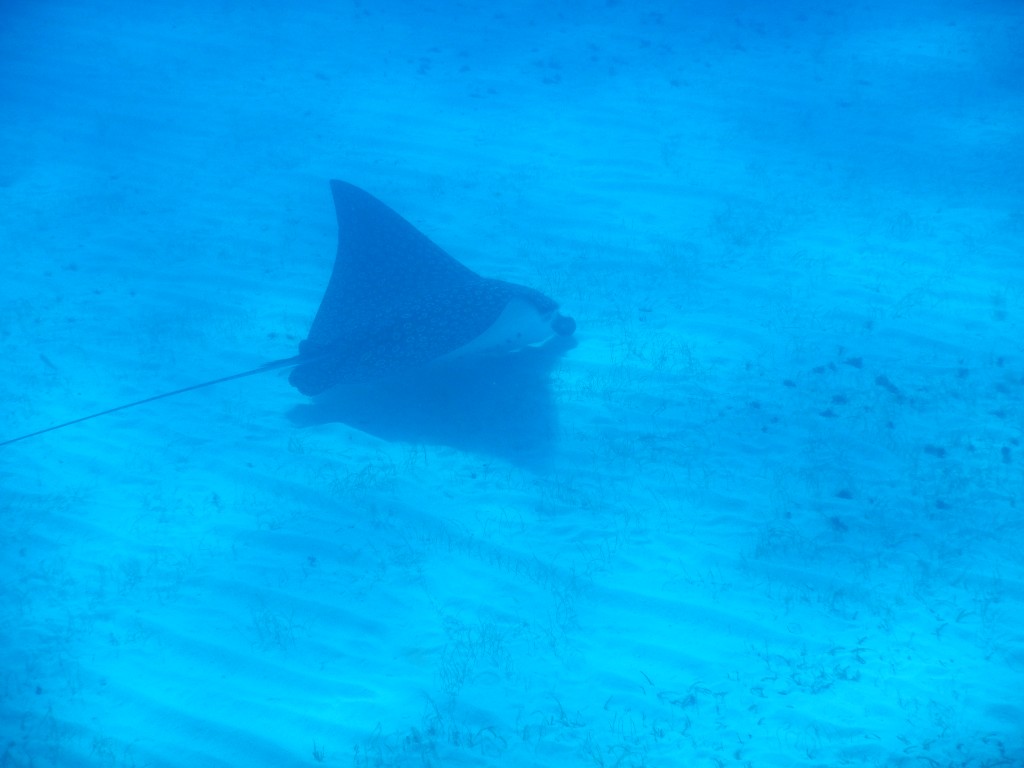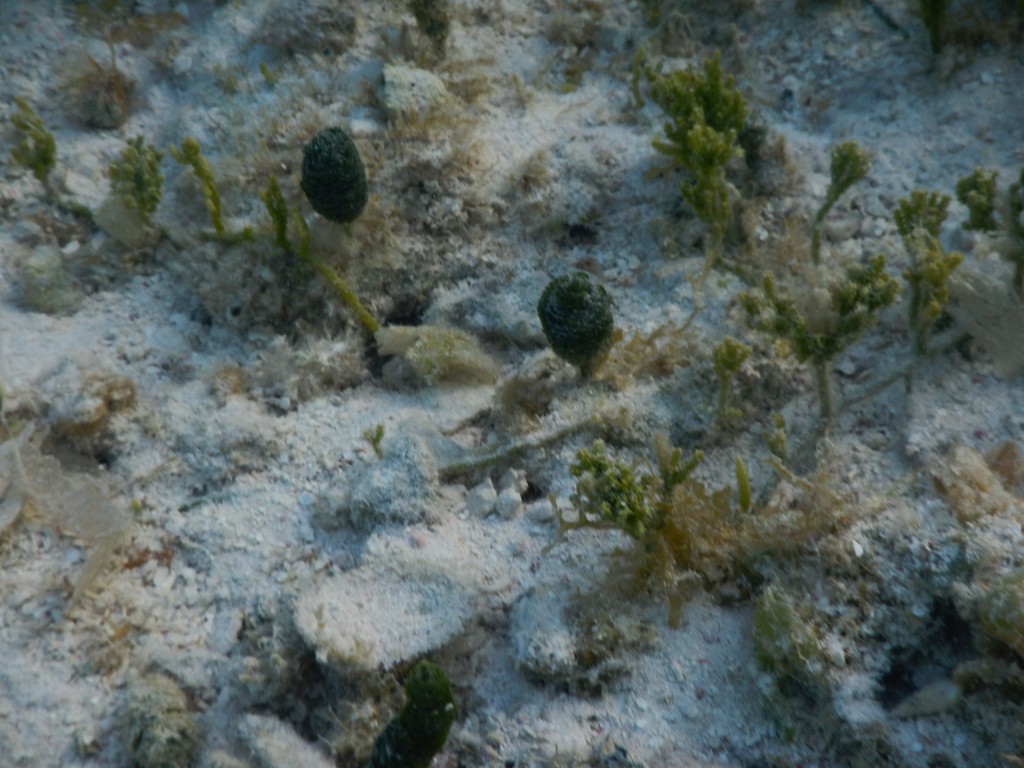
To start off this morning we ventured outside of the atoll’s lagoon to the fore reef. The fore reef is the outer edge of the reef and has the highest diversity of any reef zone. However, the fore reef also has the highest wave energy and is much deeper than the lagoon or back reef. The boat ride to the drop zones was pretty choppy, which was a bit of a challenge for some people, but most people were able to enjoy the reef once they got off the boat, and we didn’t have any vomiting.
I found it harder to see details on the fore reef because it was deeper and I couldn’t dive far enough down, but I was still able to see interesting aspects of the fore reef. There were bigger fish than in the lagoon, and I believe that the diversity of fish species may have been greater as well. The coral on the fore reef was also amazing because it had more space to grow, so the colonies were much larger. We even saw some Acropora palmata colonies, which is a species of coral that used to be a dominant reef builder but recently saw enough colony death to make it endangered. I also enjoyed seeing Acropora cervicornis because it has distinct white tips with an apical polyp that is much larger than the rest of the coral’s polyps. I learned about A. cervicornis in a class that I took last semester, so it was cool to be able to see it in person.
While we were on the fore reef we also saw a huge ray swimming across a sandy area and a nurse shark that followed our group for a while as we snorkeled alongside the reef crest.

In the afternoon we were able to go out on the back reef by Middle Caye. The water was around three feet deep, making it difficult to navigate, but we were able to get closer to the sea floor than we had been able to before. This was especially beneficial for viewing green algae, as they flourish in areas with high sun and sand. I saw a number of species of Udotea, Caulerpa, and Penicillus all in close proximity. These three species were all found on the sea floor in sandy areas or on dead corals that had accumulated a large amount of sediments. Some species of Halimeda were also found in sandy areas on the sea floor, but some were growing in crevices found on corals. The Halimeda on the floor were taller and had smaller segments, whereas the species on corals were more clumped and had larger segments

The back reef had the first lionfish that we were able to spear. While on Middle Caye, we aren’t permitted to eat any fish that we catch other than lionfish, because they are invasive. Tomorrow we will be taking measurements of the four lionfish that we caught and then we’ve been promised lionfish ceviche, which sounds delicious!
